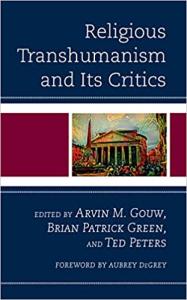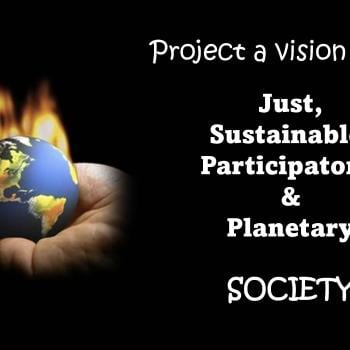 Religious Transhumanism? Yes.
Religious Transhumanism? Yes.
Buddhist Transhumanism? Yes.
H+ 7 / 2017
Religious Studies faculty frequently boil down the panoply of religious expressions to a single essence, namely, the pursuit of ultimate transformation. With this definition of religion, secular and even atheistic transhumanism counts as religious. By means of technological enhancement, transhumanists plan on a transformation so radical that our descendants will become posthuman. Immortal too. [Tian Tan Buddha, Hong Kong]
Because transhumanists are the great transformers, they belong to the religious club. Whether or not the transhumanists are atheists, they are still religious.
Our question here is this: what might a Buddhist transhumanism look like?
Religious Transhumanism and Its Critics
This series on religious transhumanism is an exercise in public theology, sponsoring a creative mutual interaction between H+ and specific religious traditions.
“Those of us who address the specifically interreligious concerns of the multifaith neighborhood in faith-rooted terms are indeed functioning as public theologians—although few of us name ourselves such.” (Lucinda Allen Mosher, “Public Theology: Characteristics from the Multireligious Neighborhood,” Anglican Theological Review 102:2 (Spring 2020) 251-262, at 262.)
The prompting occasion is the publication of Religious Transhumanism and Its Critics with Roman and Littlefield/Lexington edited by Arvin Gouw, Brian Patrick Green, and Ted Peters. We’ve been aiming at this Goliath for a half dozen years now. We’ve finally hit the mark.
Here in this Patheos series on public theology, we are constructing a scientifically informed vision of humanity’s future in light of God’s eschatological promises for ultimate transformation and renewal. In H+ 1, we asked whether AI could provide a shortcut to virtue or holiness? In H+ 2, we parsed the transhuman, the posthuman, and the truly human. In H+ 3, we distinguished Radical Life Extension, Cybernetic Immortality, and Resurrection of the Body. We asked Micah Redding about Evangelical Transhumanism in H+ 4 and Lincoln Cannon about Mormon Transhumanism in H+ 5. Hava Tirosh-Samuelson provided a Jewish analysis in H+ 6. Now, in H+ 7 we extend the discussion by touring Buddhist Transhumanism. Michael LaTorra will be our guide.
Meet Michael LaTorra
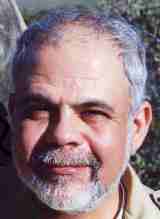 Michael LaTorra is an active transhumanist and is on the Board of Directors of the World Transhumanist Association (since renamed Humanity +) and the Institute for Ethics and Emerging Technologies. And before his retirement was President of Zen Center of Las Cruces. In 2000, he signed up for cryonics with the Alcor Life Extension Foundation. He joined the Society for Universal Immortalism thereafter. Since 2004, he has been an ordained Zen Buddhist priest.
Michael LaTorra is an active transhumanist and is on the Board of Directors of the World Transhumanist Association (since renamed Humanity +) and the Institute for Ethics and Emerging Technologies. And before his retirement was President of Zen Center of Las Cruces. In 2000, he signed up for cryonics with the Alcor Life Extension Foundation. He joined the Society for Universal Immortalism thereafter. Since 2004, he has been an ordained Zen Buddhist priest.
TP. Michael, in your chapter in Religious Transhumanism and Its Critics, you confidently lift up the following: “Both Buddhism and Transhumanism seek to reduce suffering and increase happiness, by degrees and even ultimately, or in absolute terms.” How is it the case that two very different approaches to humanity share this commitment to reducing suffering and increasing happiness? Is a Buddhist transhumanism viable?
MLT. “Let’s get real” would be my half-humorous response to that question. Both Buddhism and Transhumanism begin with a philosophically realist position. No dogmas, doctrines, or presumed metaphysics. The Buddha’s very first teaching addressed a group of ascetics. It began with this proposition: “There is suffering.”
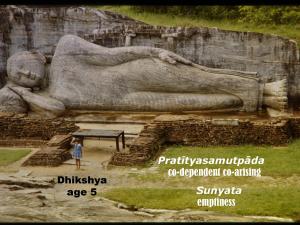 The word he used which is commonly translated as suffering is dukkha. This term, dukkha, has several meanings in addition to the primary one, suffering. A secondary meaning is unsatisfactory. In addition to the raw suffering of sickness, old age, and death, which the Buddha went on to list as primary modes of dukkha, he also said that we experience dukkha because we don’t get what we want. And, we get what we don’t want.
The word he used which is commonly translated as suffering is dukkha. This term, dukkha, has several meanings in addition to the primary one, suffering. A secondary meaning is unsatisfactory. In addition to the raw suffering of sickness, old age, and death, which the Buddha went on to list as primary modes of dukkha, he also said that we experience dukkha because we don’t get what we want. And, we get what we don’t want.
Transhumanists heartily concur on this part of the Buddha’s analysis. Yet, they go on to propose a different methodology from the one given by the Buddha for addressing this problem. While Buddhism teaches the renunciation of desire to achieve a state of contentment, Transhumanism seeks means for the complete fulfillment of desires to achieve contentment. What comes after that point is a matter for further investigation.
In my view, Buddhism offers one option for a goal beyond mere contentment, which is called Bodhi, or Awakening, or Enlightenment, or spiritual realization.
TP. Can technical enhancement as planned by transhumanists contribute to spiritual advance as practiced by Buddhists?
MLT. Yes, it can, at least in the early and intermediate stages of Buddhist practice. Transhumanists advocate the use science and technology to eliminate poverty, create super-abundant material wealth via high technology including acquiring the vast resources of outer space, and by directly removing the causes of bodily aging, decay, and debility, as well as delaying death indefinitely. Buddhist practice begins with meditation, study, and beneficent activities which all result in the consequent development of equanimity. That equanimity, or contentment, is foundational. The higher practices are built upon it. This is why Buddhist monks live together and share all responsibilities for their communal life. It frees up their time and attention for deeper meditation and higher study of the dharma (teachings).
 In a future world where Transhumanist tech provides abundant wealth without work, and health without worry, people would have the time and resources necessary to devote to meditation and study just as Buddhist renunciate monks do now. All they would need in addition to what Transhumanist tech provides would be the guidance and instruction by Buddhists teachers who have actually attained to the higher stages of practice. This is where Transhumanism and Buddhism can intersect.
In a future world where Transhumanist tech provides abundant wealth without work, and health without worry, people would have the time and resources necessary to devote to meditation and study just as Buddhist renunciate monks do now. All they would need in addition to what Transhumanist tech provides would be the guidance and instruction by Buddhists teachers who have actually attained to the higher stages of practice. This is where Transhumanism and Buddhism can intersect.
That’s a rather general sketch. A deeper dive into these possibilities would look at brain science, the effects of meditation on brain activity and development, as well as matters of diet and specific health practices with respect to the needs of each individual person. Over the millennia, Buddhists have developed rather general, more or less one-size-fits-all rules for how individuals should practice the Buddha dharma. Modern science has recently been showing us that individuals have a range of different requirements and different responses to the same practice interventions.
 For example, physicians and clinical researchers know that people can respond quite differently to the same medicines. Why does a certain drug dosage work well for one person, but not for another? Why do some people see no results at all? Or, have a terrible reaction to a drug? We don’t yet know all (or even many) of the reasons for these differences. The same is true for responses to meditation too. Only within the past decade have doctors and scientists been gathering detailed information about people who have taken up a meditation practice only to have it backfire. Willoughby Britton, an Assistant Professor of Psychiatry and Human Behavior at Brown University Medical School, has done pioneering research in this area under a grant from the National Center for Complementary and Integrative Health at the National Institutes of Health. Dr. Britton herself is a long-time practitioner of Buddhist meditation, so she is familiar with this area from both sides of the fence, so to speak.
For example, physicians and clinical researchers know that people can respond quite differently to the same medicines. Why does a certain drug dosage work well for one person, but not for another? Why do some people see no results at all? Or, have a terrible reaction to a drug? We don’t yet know all (or even many) of the reasons for these differences. The same is true for responses to meditation too. Only within the past decade have doctors and scientists been gathering detailed information about people who have taken up a meditation practice only to have it backfire. Willoughby Britton, an Assistant Professor of Psychiatry and Human Behavior at Brown University Medical School, has done pioneering research in this area under a grant from the National Center for Complementary and Integrative Health at the National Institutes of Health. Dr. Britton herself is a long-time practitioner of Buddhist meditation, so she is familiar with this area from both sides of the fence, so to speak.
Future Transhumanist technology will give us detailed knowledge of the brain so that meditation practices can be tailored to each individual’s needs, or even indicate that a person should steer away from meditation altogether and pursue other techniques for personal development. A technology that can register such information about brain operations could also provide indications of how brain development can be fostered through technical interventions.
Some Transhumanists have dreamed of creating an Enlightenment Machine that would turn anyone into a Buddha. I personally doubt that this is possible. But if a proof by demonstration of such a device were to be offered, I would change my mind about that.
TP. What is your message to bioconservatives who oppose transhumanism?
MLT. Transhumanism is an offering, not an imposition. The consensus among Transhumanists is that individual choice is a paramount ethical requirement. No one should be forced to accept Transhumanist tech into their bodies, brains, or households. Let each person choose. If they do not find the Transhumanist offering attractive, or if they have moral objections to it, they are free to pass it by. No one forces the Amish to use tractors instead of horses on their farms. But not many non-Amish farmers want to revert to horsepower over engine power. So in a free market of lifestyle options, don’t be surprised if your friends and family find Transhumanist offerings to be very attractive.
TP. Any final words?
MLT. I believe we are on the cusp of a new Axial Age. The term ‘Axial Age‘ was first used by philosopher Karl Jaspers to designate the time when the intellectual, philosophical, and religious systems that shaped later human society and culture emerged between 900 and 300 BCE. Transhumanism (perhaps under a different name) will be part of that, as will Buddhism, which arose in the previous Axial Age. Technology has been advancing rapidly ever since computers became the linchpin of our economy and our daily lives. This is only the beginning of the radical effects that technology will have on us. Transhumanism is not fighting this future, but inspiring and guiding it. Buddhist wisdom and spiritual practices can inform Transhumanism and vice versa. It’s a marriage made in Nirvana, we might say.
Conclusion
TP. What we are hearing from Michael LaTorra is a well-designed integration of transhumanist technology with Buddhist meditation and health practice. To some extent, claims LaTorra, enhancement technology is capable of furthering our spiritual goals. I offer two thoughts.
The first is a question to LaTorra. What about attachment (Upādāna)? It appears to me that Buddhism strives for detachment while transhumanism presumes our goal is perpetual attachment.
“The main difference between the pursuit of knowledge in science versus the same pursuit in Buddhism is their ultimate goals. In Buddhism, knowledge is acquired essentially for therapeutic purposes. The objective is to free ourselves from the suffering that is caused by our undue attachment to the apparent reality of the external world and by our servitude to our individual egos, which we imagine reside at the center of our being.” (Matthieu Ricard and Trinh Xuan Thuan, The Quantum and the Lotus (New York: Random House, Crown Books, 2001) 2-3).
Yes, both Buddhism and H+ seek to reduce suffering. But, for the Buddhist, the method is detachment. Whereas, for H+, the method is exploitation of attachment for healing. Which is preferred by Buddhist transhumanism?
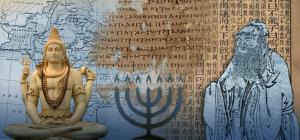 Second, I am particularly intrigued with LaTorra’s excitement over the Axial Age. The Axial Age is a topic that fascinates me. According the Jasper’s theory, the Axial Age 2500 years ago saw the birth of a new a deeper form of transcendence that lodges in the individual human soul. The Axial insight appeared almost simultaneously in China, India, Persia, Greece, and Israel. Christianity and Islam benefitted from their Axial ancestors. I traced these developments in my own book, God in Cosmic History.
Second, I am particularly intrigued with LaTorra’s excitement over the Axial Age. The Axial Age is a topic that fascinates me. According the Jasper’s theory, the Axial Age 2500 years ago saw the birth of a new a deeper form of transcendence that lodges in the individual human soul. The Axial insight appeared almost simultaneously in China, India, Persia, Greece, and Israel. Christianity and Islam benefitted from their Axial ancestors. I traced these developments in my own book, God in Cosmic History.
This brings us to LaTorra’s question: might we be on the cusp of a new Axial Age? Or, more specifically, if transhumanist technology successfully negotiates the Singularity so that a new posthuman superintelligence emerges, would this count as an Axial leap forward?
This should become the question to ask in future Patheos column posts.
▓
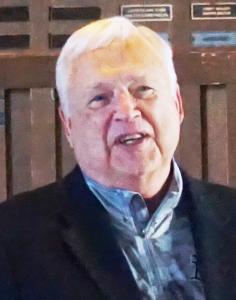 Ted Peters directs traffic at the intersection of science, religion, and ethics. Peters is an emeritus professor at the Graduate Theological Union, where he co-edits the journal, Theology and Science, on behalf of the Center for Theology and the Natural Sciences, in Berkeley, California, USA. He authored Playing God? Genetic Determinism and Human Freedom? (Routledge, 2nd ed., 2002) as well as Science, Theology, and Ethics (Ashgate 2003). He is editor of AI and IA: Utopia or Extinction? (ATF 2019). Along with Arvin Gouw and Brian Patrick Green, he co-edited the new book, Religious Transhumanism and Its Critics hot off the press (Roman and Littlefield/Lexington, 2022). Soon he will publish The Voice of Christian Public Theology (ATF 2022). See his website: TedsTimelyTake.com.
Ted Peters directs traffic at the intersection of science, religion, and ethics. Peters is an emeritus professor at the Graduate Theological Union, where he co-edits the journal, Theology and Science, on behalf of the Center for Theology and the Natural Sciences, in Berkeley, California, USA. He authored Playing God? Genetic Determinism and Human Freedom? (Routledge, 2nd ed., 2002) as well as Science, Theology, and Ethics (Ashgate 2003). He is editor of AI and IA: Utopia or Extinction? (ATF 2019). Along with Arvin Gouw and Brian Patrick Green, he co-edited the new book, Religious Transhumanism and Its Critics hot off the press (Roman and Littlefield/Lexington, 2022). Soon he will publish The Voice of Christian Public Theology (ATF 2022). See his website: TedsTimelyTake.com.
▓


